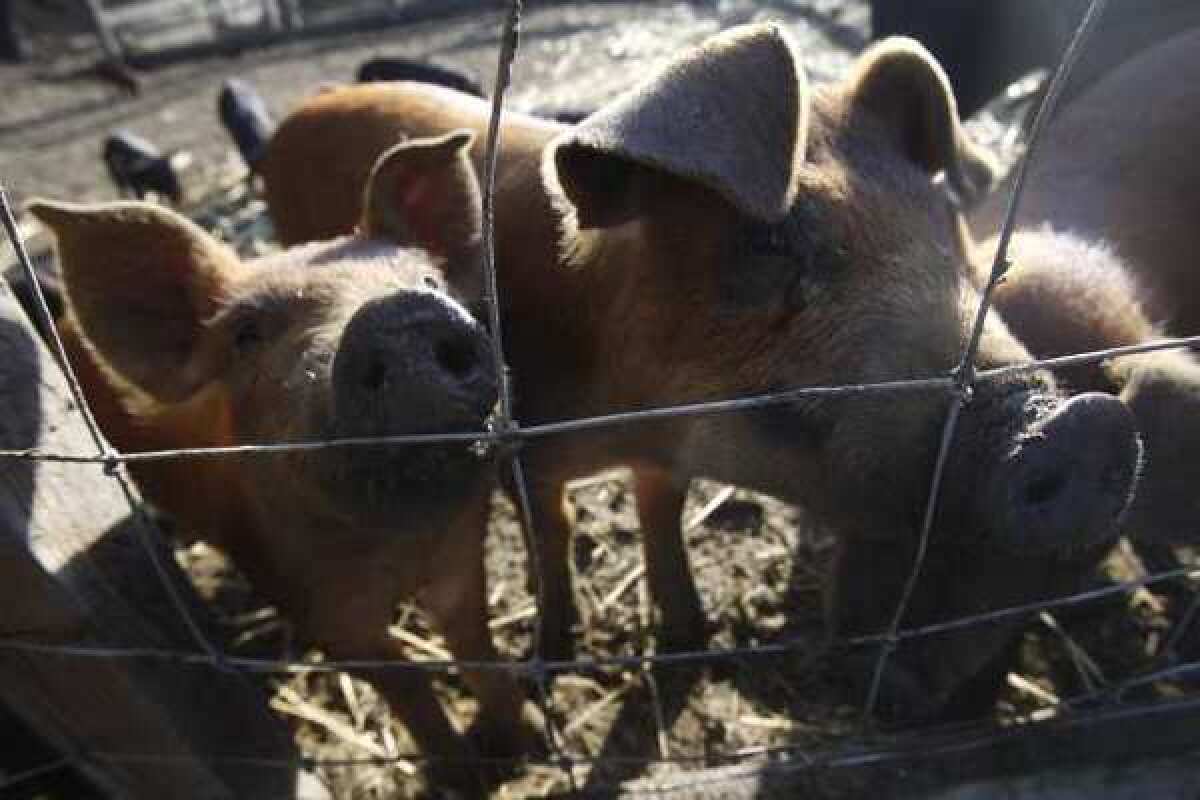Swine flu strains could mutate and infect humans, study says

- Share via
Nobody knows where the next pandemic flu will come from. Now, scientists have evidence that influenza strains common in commercial pig herds can mutate in a way that would allow them to infect humans and spread easily among them.
The study, published Monday in Proceedings of the National Academy of Sciences, found that a flu strain isolated from pigs was able to spread among ferrets and killed them with ease. Ferrets are commonly used in flu studies because they have human-like responses to flu.
Although this particular virus doesn’t pose a threat to human health because it is similar to the H1N1 swine flu that has been circulating in people since 2009, the study findings underscore the need for watchfulness, said study coauthor Richard Webby, a virologist at St. Jude Children’s Research Hospital in Memphis, Tenn.
“This is not a ‘We’re all going to die’ type of virus,” Webby said. “It’s more that we need to be vigilant and maintain surveillance of influenza in pigs.”
South Korean scientists, working with Webby and colleagues at St. Jude, analyzed four strains of influenza A viruses collected from a pig slaughterhouses. They focused their experiments on so-called triple reassortant viruses that contain a mixture of genetic properties from human, bird and swine flus.
The strains, which have infected pig herds in South Korea for a decade, originated in North America and were probably introduced to Asia through livestock imports. Similar viruses still infect U.S. pig herds and sometimes cause sickness in the animals.
The scientists infected ferrets with the viruses by introducing specimens into the animals’ noses and upper respiratory tracts. One of the four strains took hold deep in their respiratory tracts and caused severe sickness. Of the three inoculated animals, one died and two were euthanized because they were so sick.
To test whether the virus could spread easily, healthy ferrets were placed in cages next to the infected ferrets, close enough to be exposed to airborne droplets from sneezes but not close enough for the animals to touch. One died, another became sick and was euthanized, and the third remained healthy, although changes to its immune system showed it had been exposed.
The researchers found that the virus mutated twice when it spread from pigs to ferrets, permitting serious sickness and an easy spread between animals. One of the changes, in a key flu protein called hemagglutinin, appeared to help the virus replicate deeper in the lungs and thus cause more dangerous disease, Webby said.
The other mutation altered the structure of another protein called neuraminidase, which allows the virus to break out of cells and go on to infect new ones.
Although the researchers do not know for sure that the virus would infect people, the ferret findings suggest that it would. As an additional test, they grew the virus in lab dishes containing human lung and bronchial cell cultures as well as fresh human lung tissue. The scientists found that the mutated viruses grew more readily than the version that hadn’t acquired the mutations.
Virologists hope that one day they’ll know enough to predict a flu virus’ properties just by looking at its genetic sequence.
“We’re not very good at that now,” Webby said. “We can’t just look at the sequence and say, ‘Well, that’s something we should be worried about.’”
The message is that swine flu surveillance needs to be improved globally, said virologist Nancy J. Cox, director of the influenza division at the Centers for Disease Control and Prevention in Atlanta. The genetic databases for flu strains contain many thousands obtained from human beings, but “if you try to find sequences of influenza viruses isolated from pigs you’ll find coverage is very spotty.”
“What we’re worried about is not so much this particular virus,” Cox said. “It’s all of those other viruses that may be in swine populations in other parts of the world.”






